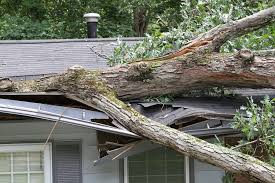Most Common Roof Leak Locations
by N Turner |November 6, 2018
Roofing Specialists Northwest – Blog
Your roof can leak anywhere, but there is rarely randomness about the location of leaks. When you’re experiencing a Roof leaking in Seattle or any other rainy city, you can usually track the leak’s location relatively easily. Often, it comes down to a small number of familiar places that you or your roofer can check in only a few minutes.
Gutter Line
Your gutters are not the place that most people would associate with leaking, but this can quickly happen. Gutters have the unfortunate job of taking a lot of water in and channeling it away from the home – even if there is a clog and a ton of precipitation all at once. This is when a leak can happen very easily.
Bits of debris can easily clog your downspouts or create small dams in your gutters. When this happens, the water has to go somewhere, and it can pool upward into the lower part of your roof. When this happens, water can seep underneath your shingles and begin causing damage. In some cases, water can even begin to soak into the decking and go further toward the middle of your home.
Skylights
If you have a skylight, the question is not whether or not it is going to leak – it is how much is it going to leak, and how long until you notice the leaking? Skylights are very difficult to properly flash, and the fact that they are essentially a raised platform on your roof means that water can easily begin to collect up there. When water collects, it tends to seep inwards.
Checking your roof for leaks every year is a generally good idea. If you have skylights, checking them at the beginning of each season is an even better idea. The sooner you catch a leak here, the better off you will be.
Flashing
When the curve of your roof line meets another curve, this needs to be carefully flashed so that water can flow over it properly without penetrating the roof itself. If this is not done very carefully or is in any way compromised by weak materials, a leak is imminent. Flashing should be solid, but over time it can tarnish or rust just like any other kind of metal surface.

In some cases, such as with old black iron pipes, the flashing can be damaged by what it is surrounding. The flashing materials around pipes tend to be made out of rubber, which can easily be cut by a pipe’s surface. Checking this is an easy way to ensure that a significant potential threat does not happen.
Where Trees Touch
It is vitally important to trim back trees that are growing toward your home, as wood touching shingles tend to damage the latter. If there have been branches touching a part of your roof, there is a good chance that the shingles have begun to weaken. This is where pieces can break off or become cracked, allowing water to flow in.

Now that you are aware of the areas where a roof can leak (which is virtually anywhere), you need to ensure your roof is checked regularly. Contact us for roof repair and maintenance work in Seattle and Lynnwood areas.
